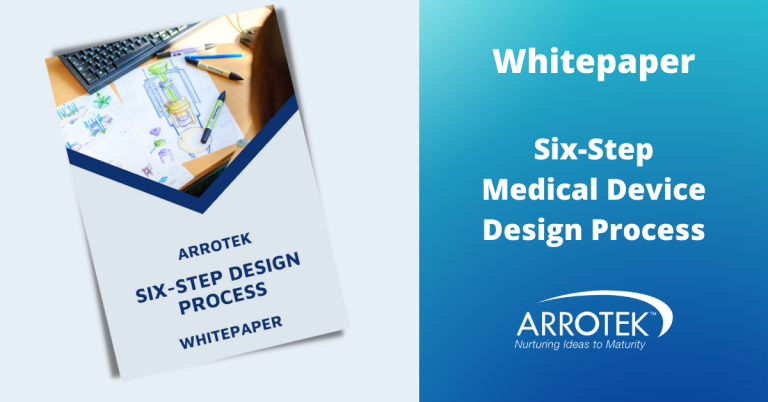Without interventional guidewires, many minimally invasive medical procedures that are common today simply wouldn’t be possible. They are an essential component of many interventional, therapeutic, and diagnostic devices, including catheters, and they have become increasingly sophisticated and innovative.
Excitingly, however, we haven’t yet reached the innovation peak of interventional guidewires. Cutting-edge technologies, new ways of using materials, and intelligent design concepts are continually being developed, pushing the boundaries of what is possible.
If you have an idea for a new medical device, what are the design considerations that you need to be aware of for the interventional guidewire component? Here’s an overview of the main points you need to know.
Performance Characteristics of Interventional Guidewires
As with other aspects of medical device design, developing a new interventional guidewire involves balancing various performance characteristics. The main considerations include:
- Atraumatic access – soft and smooth access into the patient’s body, including to optimise cannulation and minimise access trauma.
- Trackability – smooth tracking throughout the procedure. Trackability is the ability of the wire to follow the tip as it navigates tortuous anatomy.
- Lubricity – to help navigate tortuous anatomy and get past obstructions.
- Visibility – radiopaque tips and radiopaque markers along the wire enhance visibility.
- Torque control – to enhance responsiveness when physicians turn the device (apply rotational force), including when accessing lesions. The goal is often 1:1 torque.
- Shape retention and durability – shape retention and tip durability are particularly important in applications that require access to multiple lesions, although most applications require good shape retention and durability.
- Stiffness and pushability – balanced with other performance requirements, stiffness and pushability aid navigation through vasculatures.
- Crossing performance – crossing performance is the ability to get past vasculature obstructions in the least time possible and without causing trauma (for example, by perforating a vessel wall). After all, if the interventional guidewire can’t cross the occlusion or lesion, the device will not be capable of treating it.
- Steerability – steerability is important in most applications, but it comes into even sharper focus with applications that involve navigating tortuous anatomy, tight stenoses, and lesions that are sensitive to spasm.
- Kink resistance – preventing kinks in the guidewire as the operator moves it into position.
- Rail support, or supportability – to ensure effective device delivery over the guidewire without additional wire exchanges or buddy wires. For example, a floppy wire can often be used to support balloon delivery devices, while moderate or extra support wires are typically preferred for stenting applications.
- Tactile feedback – to help the operator navigate tortuous anatomy and cross obstructions.
Interventional Guidewire Element Considerations
Medical device design engineers achieve the performance characteristics described above through the design of the various elements of a new interventional guidewire.
Material
Interventional guidewires are typically made from stainless steel or nitinol. You can also have a combination of materials, such as a nitinol tip with a stainless steel body.
Reinforcement
Interventional guidewires are complex devices that typically have multiple layers, including a reinforcement layer. Braid and coil reinforcement are the main methods of reinforcement. The aim of a reinforcement layer is to enhance certain performance characteristics of the wire, such as kink resistance and flexibility.
Reinforcement technologies are also increasingly blurring the line between guidewires and microcatheters. For example, in some applications, guidewire tips are bonded to microcatheters or stent delivery catheter assemblies, so there is no need for a separate guidewire.
Coatings
PTFE coatings are popular on interventional guidewires because they enhance navigation and help with tracking. Other polymers can also be used depending on the application.
Whether the coating is hydrophilic or hydrophobic is an important consideration too:
- Hydrophilic coatings reduce friction, particularly when applied to the guidewire’s tip. This helps navigation and lesion crossing. Hydrophilic coatings can, however, reduce tactile feedback.
- Hydrophobic coatings can be used to help enhance tactile feedback. Hydrophobic coatings can also improve trackability.
Wire Diameter
The overall diameter of interventional guidewires varies depending on the application, but cutting-edge devices often require the diameter to be as small as possible. With current technologies and innovations, the diameter of an interventional guidewire can be as low as 0.014″ (0.36mm). At the tip, the diameter can be as low as 0.01” (0.25mm).
Tip
The design of the tip is crucial to the performance of an interventional guidewire. The tip design facilitates atraumatic access while also enabling navigation to the target location in the body.
Key considerations for the tip design include:
- Tip style – straight, angled, J, or S-shaped tip, as well as being floppy or standard
- Tip end – rounded and/or soft ends to help minimise damage to vessel walls
- Length – length of the tip and taper depending on the application
- Shapeable tips – as well as the ability to retain the desired shape
- Tip load – tip load is crucial to achieving the required level of crossing performance. Tip load is the amount of pressure that can be applied to the tip before the tip buckles or deflects.
- Transition – ensuring a smooth transition between the tip and core of the guidewire
Discuss Your Requirements Today
The above is an overview of the design considerations when developing the interventional guidewire component of a new medical device. To discuss the project you are planning with a member of our design and engineering team, or to find out more, please complete the form below and we’ll get back to you.





